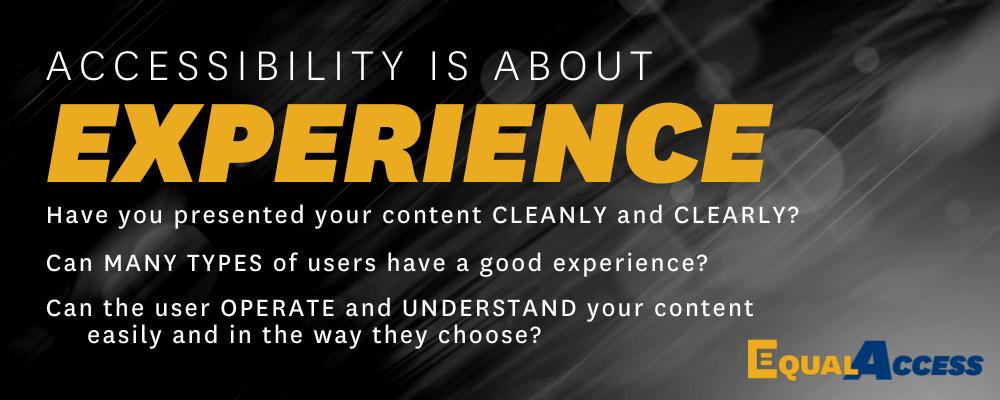Accessible Marketing
Accompanying Virtual Training: Creating Accessible Marketing & Social Media
Please email ahayne23@kent.edu to discuss personalized workshops for your team
DIGITAL MARKETING includes a dizzying amount of media types: videos, graphics, blogs, social media, infographics, content marketing, paid advertising, search engine optimization, catalogs, exhibits...
Rather than show step-by-step instructions for every platform and operating system (which are constantly changing), we're going to share CONCEPTS that you can DRAG & DROP onto any digital marketing project.
Accessibility Concepts for Digital Marketing
Designing and deploying accessible content starts with thinking through the CONTEXT and EXPERIENCE your user might have. Where will they be? What will they be viewing your content on? Can they control playback or captioning?
Study the concepts in the two images below, then choose a specific accessibility issue to learn its digital marketing application. We've grouped all marketing content using the (Perceivable, Operable, Understandable, Robust), hoping this helps you retain principles that can be applied to any content creation.


Who can I contact if I have questions about accessible marketing?
Image









